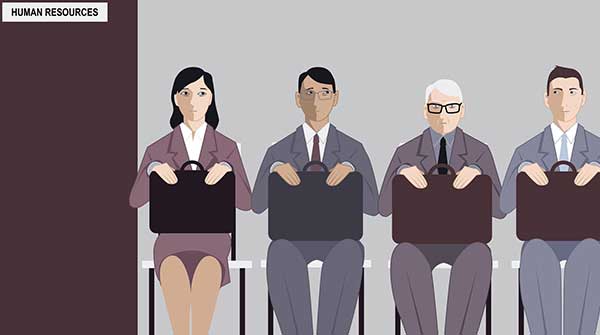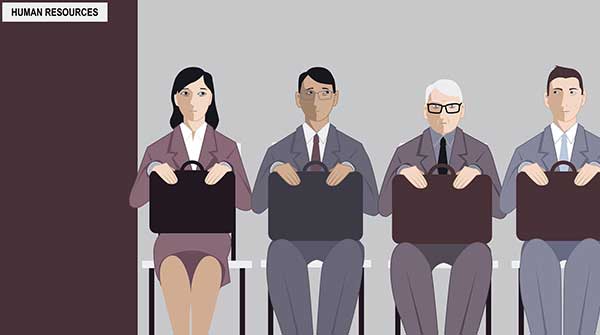So show them you won’t become their biggest headache if hired
 There are two sides to every story and every issue. When it comes to hiring, there’s the employer’s side and the job seeker’s side.
There are two sides to every story and every issue. When it comes to hiring, there’s the employer’s side and the job seeker’s side.
- Employer’s side: Find the best candidate with the least perceived risks, willing to accept the compensation package being offered. (Risk aversion is why long hiring processes and numerous vetting steps exist.)
- Job seeker’s side: Obtain a rewarding and satisfying job that pays well.
As you can see, each party is looking out for their own interests, resulting in a contradictory situation. In John Hughes’s 1985 film The Breakfast Club, Andrew Clark (played by Emilio Estevez), in the library scene, sums up the end goal I’d say most job seekers and employees have: “What would I do for a million bucks? Well, I guess I’d do as little as I had to.”
 |
| Related Stories |
| How to make LinkedIn your job search partner
|
| Women are retiring in greater numbers – and that’s a problem
|
| Three steps to creating your own job
|
In recent years job seekers and employees have been creating unquantified narratives that attempt to justify doing the least amount of work – and to work on their terms – for the most money. I find employees today are promoting the view that employers are responsible for their well-being – they expect their employer to act as their nanny. Employee-employer relationships are rarely discussed in terms of finding a middle ground, which I believe exists, in which employees look out for their employers’ interests and vice versa. Where’s the brainstorming on how to form a healthy “you scratch my back, I scratch yours” employer-employee relationship?
Until we reach a point of balanced co-dependency, the current, growing tug-of-war between employer and employee will continue. Often, this pulling in opposite directions results in workplaces that neither the employer nor the employee(s) is happy with.
Employee-employer relationships will never be 100 per cent equal because employers create jobs and sign the paycheques; thus, employees are income dependent on their employer. In employee-employer relationships, this dependency gives employers more leverage. Consequently, it’s in the job seeker’s best interest to understand the many risks employers want to mitigate when hiring and how their biases were formed. Embracing the employer’s perspective will help you succeed more efficiently in the job market.
Business survival requires companies to primarily focus on creating and distributing products and/or services as profitably as possible. Profits, which are needed to survive, will always remain the ultimate objective of companies, despite their efforts to disguise the profit-seeking motive through less capitalistic language. No profits = No company. The more profits generated with the least amount of friction (READ: headaches), the better.
An employer’s biggest headache is managing its employees, especially with employees’ growing sense of entitlement, keeping them from focusing on profit creation. It’s common knowledge that payroll is the largest expense employers face. Ironically, an employer’s biggest expense is also its biggest headache.
Profitability is an employer’s ultimate goal, while minimizing headaches and risks. Hence, employers prefer candidates who can deliver the greatest ROI for their compensation and who’ll not create “too many” headaches and risks. In my last column, I wrote that hiring is choosing, a process requiring discriminating against those not chosen. Regarding a candidate’s age, a hiring manager may have many risk assumptions (READ: biases).
- Older candidates: Set in their ways, overqualified (Yes, you can be overqualified, which makes you a flight risk), won’t fit with the current demographics of employees/customer base, don’t possess the latest-technology skills, have health issues, expect a higher salary.
- Younger candidates: Don’t have a proven track record of achieving results, flight risk (Always seeking better opportunities), lack a solid work ethic, will be demanding, have a sense of entitlement.
Do the presumptions mentioned above have merit? In the eyes of the employer, yes. Human psychology explains how biases are formed: Our brains are trained by our experiences. A hiring manager may be more inclined to hire candidates over 40 if they’ve had several “bad experiences” hiring candidates under 40. If the hiring manager has had several bad experiences hiring candidates over 40, the reverse will probably be true.
Truth bomb for all job seekers, regardless of age: Never think you’re “the best;” you’re not. Instead, aim to be the least painful option, which is a much easier target to hit than claiming and trying to prove you’re “the best.”
Contrary to conventional psychology, most of your biases don’t come from what your parents, teachers, or friends have told you or taught you or by adopting their biases. Your biases come from what you’ve personally experienced. By understanding how an employer’s hiring experiences may negatively impact their view of your age, you can take proactive steps towards addressing how your age is irrelevant, even advantageous. How? Check out my column next week.
Nick Kossovan, a well-seasoned veteran of the corporate landscape, offers advice on searching for a job.
For interview requests, click here.
The opinions expressed by our columnists and contributors are theirs alone and do not inherently or expressly reflect the views of our publication.
© Troy Media
Troy Media is an editorial content provider to media outlets and its own hosted community news outlets across Canada.

